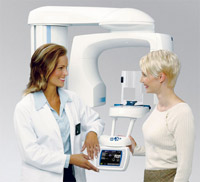Useful
-
Teeth sensitivity has increased – chances are, you are suffering from the wedge-shaped defect
Oftentimes, the patient complains about the problem of short-term pain from sour, sweet, cold, or when touching the toothbrush during cleaning. Sometimes soreness is absent or the doctor during the examination states the diagnosis – the wedge-shaped defect. So what is this diagnosis all about?
-

How should parents behave at the dentist’s office?
It is normal that when you bring your child to the dentist, you worry about how everything will go. And if the child is in pain, then you are the one suffering as well. Perhaps you feel guilty, and you want to quickly change the situation, alleviate the child’s suffering.
-

Why would you need teeth fluoridation?
Numerous patients of various dental clinics are in need of additional strengthening of their teeth’ enamel. Strengthening teeth’ enamel may be required for prevention of tooth decay or due to increased teeth’ sensitivity, also known as hyperesthesia. The need to strengthen the teeth may also resurface due to lack of fluoride and calcium. One of the strengthening procedures is teeth fluoridation using fluorine-containing solutions and varnishes. Fluorides strengthen teeth resistance to the effects of acidic environment and significantly reduce bacteria’s metabolism. Fluoridation allows you to saturate tooth enamel with fluoride ions, which significantly slow down the caries formation process along with tooth decay.
-

Food gets stuck between the teeth, thread breaks when cleaning the teeth, the gum under the seal hurts and bleeds?!
When restoring the teeth, dentists are doing their best in order to restore the tooth strictly in line with its natural analogue - a natural crown of a healthy tooth.
-

Computer tomography at DENTA VITA clinic
Cone-Ray Computer Tomography (CRCT) is one of the methods of studying bone tissue condition, which is based on radiation diagnostics. Yet, in comparison with traditional medical tomography, the radiation load is significantly smaller, thanks to the cone-ray-intermittent scanning method (the total scan time takes about 6 seconds). Along with orthopantomogram as well as precise X-ray, it is actively used in dentistry, implantology as well as otorhinolaryngology. It is quite different from traditional method of two-dimensional X-Rays in that it allows us to get not merely a flat 2D, but a three-dimensional 3D image of the entire jaw along with the maxillary sinuses.

















